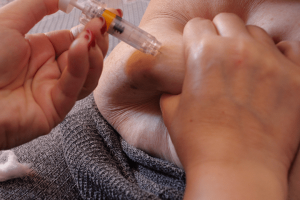Can you Pre-Select Your Baby’s Gender?
Interfering with a group decision to prevent genetically transmitted diseases and to safeguard against gender-related illnesses would not be appropriate.
According to scientific data, there is a 50% chance that the baby will be a boy or a girl, and in this situation, regardless of the method used, 50% of the couples are already interested in the baby’s gender.
X: The genetic components that make up a girl.
A: The components of a boy’s genetic make up.
How to determine the sex of a baby?
There are 23 pairs of chromosomes in each human cell (46 in total). The biological mother’s egg provided the other half of them, while the other half came from the biological father’s sperm.
The baby’s sex is determined by two of these chromosomes, known as the X and Y chromosomes or “sex chromosomes.” The egg always contributes one X chromosome, while the sperm contributes the second, which may be an X or Y.
The baby will be a female if the sperm that fertilizes the egg carries an X chromosome (XX genotype). There will be a male Y chromosome if one exists (XY genotype). The baby’s sex is determined by the sperm.

How to choose the sex of the baby?
If you are thinking of having a baby and you want to choose the gender of your baby, you can choose IVF treatment. IVF treatments are a frequently preferred method for patients who want to experience gender selection. If you want to have a daughter or a son, you can do this with gender selection.
PGD and PGS/PGT-A testing process for gender selection
The embryos can be examined by fertility specialists after the egg and sperm have united and fertilized.
Preimplantation genetic diagnosis (PGD) or preimplantation genetic screening (PGS/PGT-A) is the method used to achieve this. Fertility specialists can find out if an embryo has any chromosomal abnormalities that could cause a birth defect or developmental issue by performing PGD/PGS/PGT-A testing on embryos. Of course, it is still possible to determine the sex of the embryo at this point. The tests were out can identify the sex of the embryo.
Gender selection success rates with PGS/PGT-A/PGD
During their IVF journey, intended parents can determine gender via PGD, PGS, or PGT-A. The sex selection procedure is nearly 100% correct because to the fertility doctor’s capacity to recognize the XX or XY chromosomes in the embryo with PGD tests.
However, because to considerations relating to age, egg supply, and sperm quality, not all patients are able to develop healthy embryos of the chosen sex.
IVF Gender Selection
IVF sex selection is possible with some tests, such as the place name above. Eggs taken from the expectant mother and sperm from the father-to-be are combined in the laboratory environment. The sexes of the resulting embryos are tested. The gender desired by the parents is placed in the womb of the expectant mother. Thus, the process is completed.














